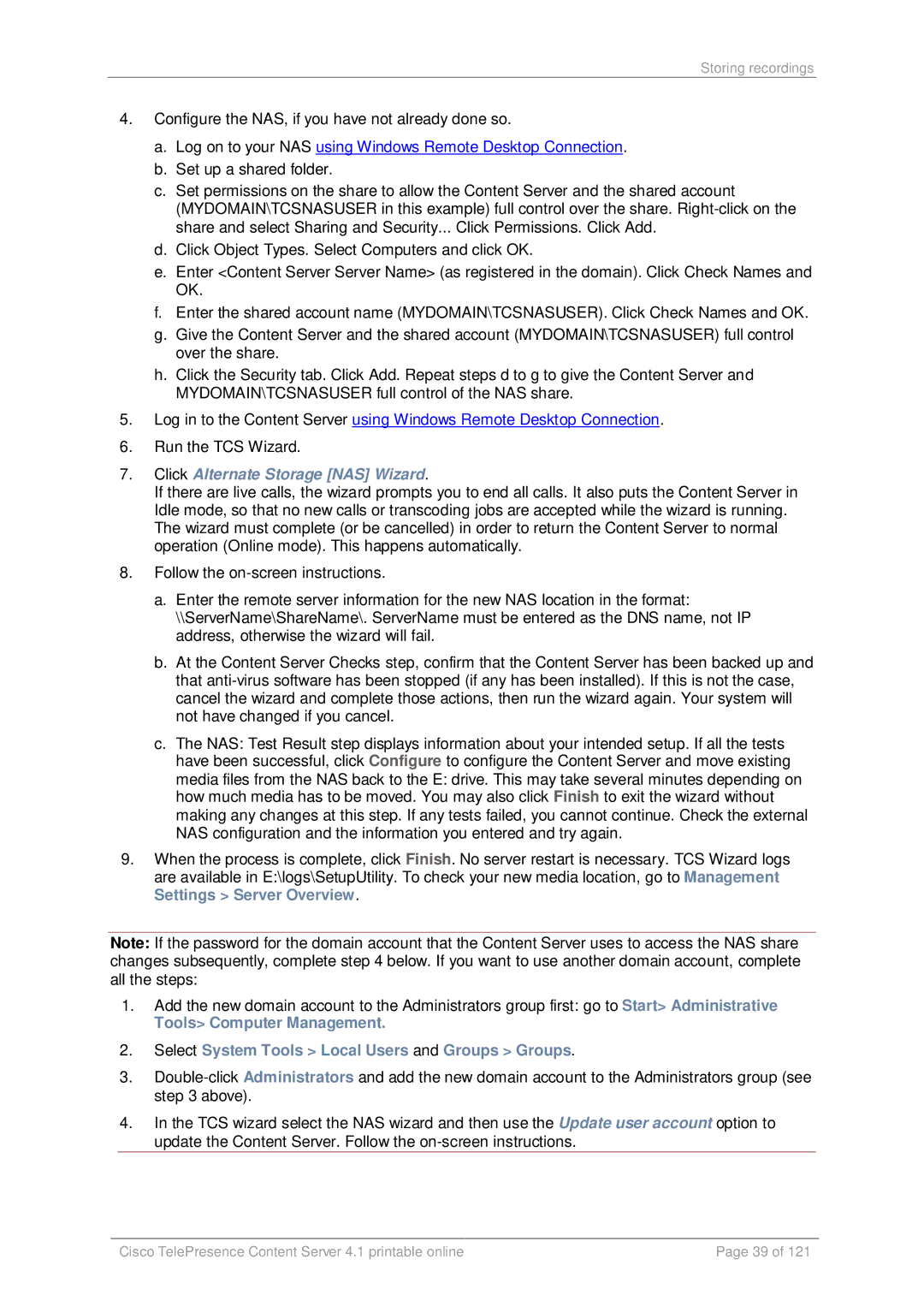
Storing recordings
4.Configure the NAS, if you have not already done so.
a.Log on to your NAS using Windows Remote Desktop Connection.
b.Set up a shared folder.
c.Set permissions on the share to allow the Content Server and the shared account (MYDOMAIN\TCSNASUSER in this example) full control over the share.
d.Click Object Types. Select Computers and click OK.
e.Enter <Content Server Server Name> (as registered in the domain). Click Check Names and OK.
f.Enter the shared account name (MYDOMAIN\TCSNASUSER). Click Check Names and OK.
g.Give the Content Server and the shared account (MYDOMAIN\TCSNASUSER) full control over the share.
h.Click the Security tab. Click Add. Repeat steps d to g to give the Content Server and MYDOMAIN\TCSNASUSER full control of the NAS share.
5.Log in to the Content Server using Windows Remote Desktop Connection.
6.Run the TCS Wizard.
7.Click Alternate Storage [NAS] Wizard.
If there are live calls, the wizard prompts you to end all calls. It also puts the Content Server in Idle mode, so that no new calls or transcoding jobs are accepted while the wizard is running. The wizard must complete (or be cancelled) in order to return the Content Server to normal operation (Online mode). This happens automatically.
8.Follow the
a.Enter the remote server information for the new NAS location in the format: \\ServerName\ShareName\. ServerName must be entered as the DNS name, not IP address, otherwise the wizard will fail.
b.At the Content Server Checks step, confirm that the Content Server has been backed up and that
c.The NAS: Test Result step displays information about your intended setup. If all the tests have been successful, click Configure to configure the Content Server and move existing media files from the NAS back to the E: drive. This may take several minutes depending on how much media has to be moved. You may also click Finish to exit the wizard without making any changes at this step. If any tests failed, you cannot continue. Check the external NAS configuration and the information you entered and try again.
9.When the process is complete, click Finish. No server restart is necessary. TCS Wizard logs are available in E:\logs\SetupUtility. To check your new media location, go to Management Settings > Server Overview.
Note: If the password for the domain account that the Content Server uses to access the NAS share changes subsequently, complete step 4 below. If you want to use another domain account, complete all the steps:
1.Add the new domain account to the Administrators group first: go to Start> Administrative
Tools> Computer Management.
2.Select System Tools > Local Users and Groups > Groups.
3.
4.In the TCS wizard select the NAS wizard and then use the Update user account option to update the Content Server. Follow the
Cisco TelePresence Content Server 4.1 printable online | Page 39 of 121 |
